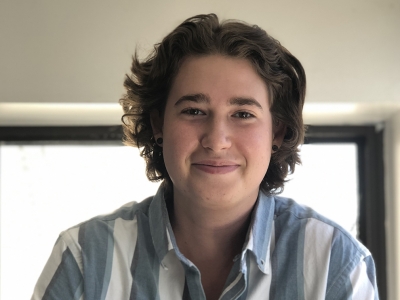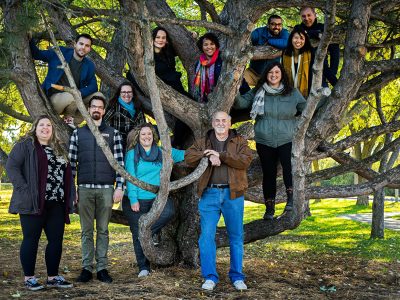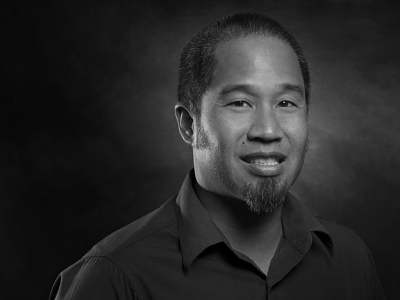By Karen Kelly
Photos by Bryan Gagnon
Roxham Road is a quiet country road that straddles the border between New York state and Quebec. Over the last two years, nearly 50,000 people have crossed the Canada-US border on foot—most of them using this country path.
They are asylum seekers—from countries such as Colombia, Haiti, Pakistan, Turkey, Yemen, and Nigeria—who are bypassing the tougher refugee and immigration rules imposed by the United States since 2017.
They use this “irregular” crossing for a simple reason: it’s the only way they can seek refugee status in Canada if they are coming from the United States.
“The Safe Third Country Agreement requires asylum seekers arriving by land to make a refugee claim in the first country that they arrive in, whether it be the U.S. or Canada,” explains Political Scientist Laura Macdonald, who has studied North American politics for decades. “So if they tried to make a claim at an official port of entry in Canada, they would be sent back. But when they cross at a spot in between the official entry ports, they’re taken into custody by the RCMP and allowed to file an asylum claim.”
These irregular crossings are at the heart of a legal challenge against the Safe Third Country Agreement. It is currently before the Federal Court of Canada and was brought forward by Amnesty International, the Canadian Council of Refugees, and the Canadian Council for Churches, as well as individuals who were affected by this agreement.
Essentially, the challenge is asking if the United States is a safe third country for asylum seekers. After conducting research on both the Canadian and Mexican borders, Macdonald believes that the answer is “no”.
“If you look at what’s happening on the U.S.-Mexico border with the separation of families, the caging of children and the unwillingness to hear asylum cases, I think the United States is abrogating the rights of asylum claimants,” argues Macdonald, who is cross-appointed to the Institute of Political Economy, and is doing this research with Dr. Jeffrey Ayres of St. Michael’s College in Vermont. “The agreement was signed in 2002 under the assumption that the U.S. was a safe third country and their policies were similar to Canada’s. We now see that they are in fact remarkably different from Canada’s.”
Abolition vs. Expansion
While some groups are calling for the agreement to be abolished, the U.S. and Canadian governments are actually advocating for an expansion of safe third country restrictions.
For instance, the Trudeau government has been in talks with the United States to “modernize” the agreement to limit asylum claims. During the recent election campaign, the Conservative Party proposed expanding the agreement so it applies to the entire border, not just official crossings. Meanwhile, according to the United Nations High Commissioner for Refugees, the number of irregular crossings has gone down in 2019.
However, Macdonald says that U.S. President Trump is using the agreement as a template for deals with other countries.
“He is pursuing similar policies with El Salvador, Guatemala, and Honduras. He has coerced these governments into signing a safe third country agreement by withholding aid unless they do so,” says Macdonald. “It’s a form of blackmail and extortion”.

Post 9/11 World
In her research, Macdonald has traced the “securitization” of the U.S. borders back to the 9/11 attacks. The Niagara Falls native says that when she was young, people who lived along the U.S.-Canada border could “wander across to buy milk.”
But with false suspicions that the 9/11 attackers entered the U.S. from Canada, the border literally closed and then reopened with much tighter restrictions. The following year, Canada and the U.S. signed the Safe Third Country Agreement.
Today, Macdonald and her international colleagues are studying how civil society groups are responding to the American government’s border crackdown. They’ve received an Insight Grant from the Social Sciences and Humanities Research Council for their work, which also looks at transnational activism within North America around trade, labour rights and human rights in Mexico.
“We’re interested in the politics of border control, how it’s changed over time, and how certain actors are making use of that situation to promote certain political interests,” she explains.
The Future of Roxham Road
Macdonald says it’s unlikely the border will ever go back to the days of fluid movement between Americans and Canadians. But there is much more work to be done in researching and understanding the migration of people—whether in North America or around the globe.
That’s why Carleton University will be leveraging its expertise in Migration and Diaspora Studies to launch a master’s degree in the subject in September 2020, as well as a graduate diploma and an undergraduate concentration in the Bachelor of Global and International Studies. (BGInS)
According to Macdonald, “Carleton University is at the forefront of critical analysis of how migration and border control policies are shifting in a changing global environment. And in that context, we are asking how individuals and groups are fighting to protect the rights of migrants.”
Banner photo by Mike Lorusso on Unsplash
Thursday, December 5, 2019 in Another Take, Department of Political Science
Share: Twitter, Facebook



